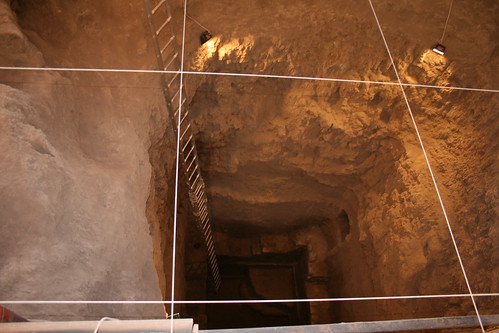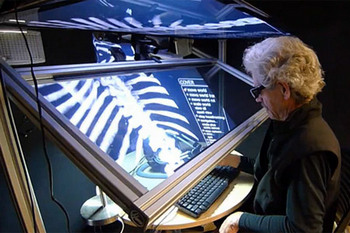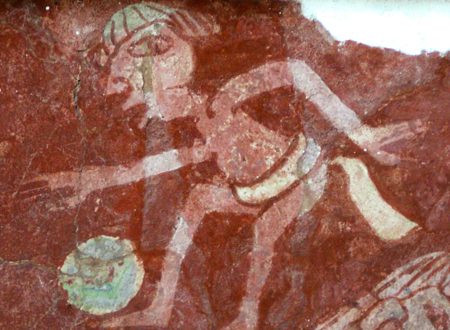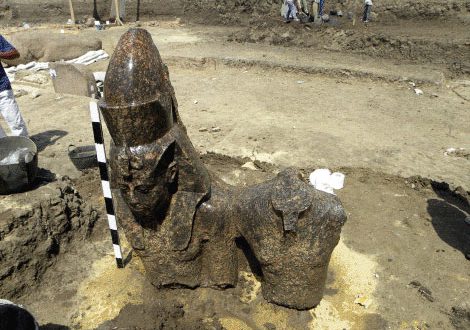 Archaeologists have discovered a 1,800 year old tunnel that leads to a system of galleries 12 meters below Teotihuacan’s Temple of Quetzalcoatl, the Feathered Serpent, in Mexico.
Archaeologists have discovered a 1,800 year old tunnel that leads to a system of galleries 12 meters below Teotihuacan’s Temple of Quetzalcoatl, the Feathered Serpent, in Mexico.
Spanning an area of more than 83 square kilometres, Teotihuacan is one of the largest archaeological sites in Mexico and is a UNESCO World Heritage Site. The city had nearly 250,000 inhabitants when it was at its height in the early 1st millennium AD. It also contains some of the largest pre-Columbian pyramids in the New World.
Archaeologists hope that the galleries they detected are actually the tombs of Teotihuacans rulers. “For a long time local and foreign archaeologists have attempted to locate the graves of the ancient city’s rulers, but the search has been fruitless, said project director Sergio Chaves Gomez. “That’s why every day our expectations are increasing, as there are many chances that they are sitting inside a large tomb or offering.
As early as 2003 archaeologists suspected the tunnel was there after a rainstorm caused the ground to sink at the Temple of Quetzalcoatl, also known as the Feathered Serpent Pyramid. It took archaeologists Gomez and Julie Gazzola several years to plan the excavations and raise the necessary funds. They began work last year and discovered the entrance to the tunnel a few weeks ago.
Before the start of the excavations, a systematic survey of the tunnel was made. Ground penetrating radar or GPR and laser scanning were used to generate a 3D image of the archaeological site, allowing researchers to estimate the length of the tunnel, and to confirm the presence of the rock-cut chambers.
The tunnel is accessed by a vertical shaft of almost 5 by 5 metres wide and runs 14 metres deep, which gives access to a corridor nearly 100 metres long ending in a series of rock-cut galleries which may be the tombs of Teotihuacan’s rulers.
The entrance to the underground passage which runs under the Temple of the Feathered Serpent, the most important building of Teotihuacan’s Citadel is located only a few metres away from the temple itself .
A small opening was made and the scanner captured the first images. Angel Mora, from the CNMH Technological Support Unit, and engineer Juan Carlos Garcia, scanner operator, mentioned that when introducing the laser only a 37-meter length was registered for the tunnel. According to Mora, this indicates that the beam bumped into something, maybe rocks, a landside, or a change of level.


The entrance to the 12 metres deep ancient tunnel, and Sergio Gomez in front of the excavation area, where he hopes to open a 1800-year-old burial chamber. Photos by Flickr user DerMikelele.
Although the archaeologists still have two metres to dig before they reach the tunnel’s floor, the images will help them plan how to enter the tunnel. So far, about 200 tons of soil and debris have been removed from the tunnel and nearly 60,000 fragments of artifacts have been recovered.
Specialists of Mexico’s National Institute of Anthropology and History (INAH) plan to enter the tunnel in about 2 months time, when the vertical shaft is fully excavated. Then, they’ll start scanning the tunnel, which leads away east from the entrance.
The complete process might take another 2 months of work, we must continue exploration the same way done so far, to avoid losing important information that will allow us knowing activities conducted there by Teotihuacan people hundreds of years ago and why they decided to close it, mentioned Gomez Chavez.
Why was the tunnel closed?
It is not known why or when exactly the tunnel was closed. Yet, the excavation of the shaft has already offered some clues, says Gomez. He adds, “several indications suggest that access to the underground passage was closed between 200 and 250 AD, probably after depositing something inside.
The archaeologists now know for certain that the tunnel already existed when the Citadel and the Temple of the Feathered Serpent were constructed. When the tunnel was closed, large stones were thrown in to block its access. It is thought this happened around the same date of a large structure because of its shape thought to be a ball court.
Let’s hope Mr Gomez hasbetter luck than Dr Hawass when reaching the end of the tunnel of Seti I? As so far, no ‘royal remains’ have been found at Teotihuacan,the discovery of some kind of King (albeitlong time deceased)wouldmake foran amazing discovery.





